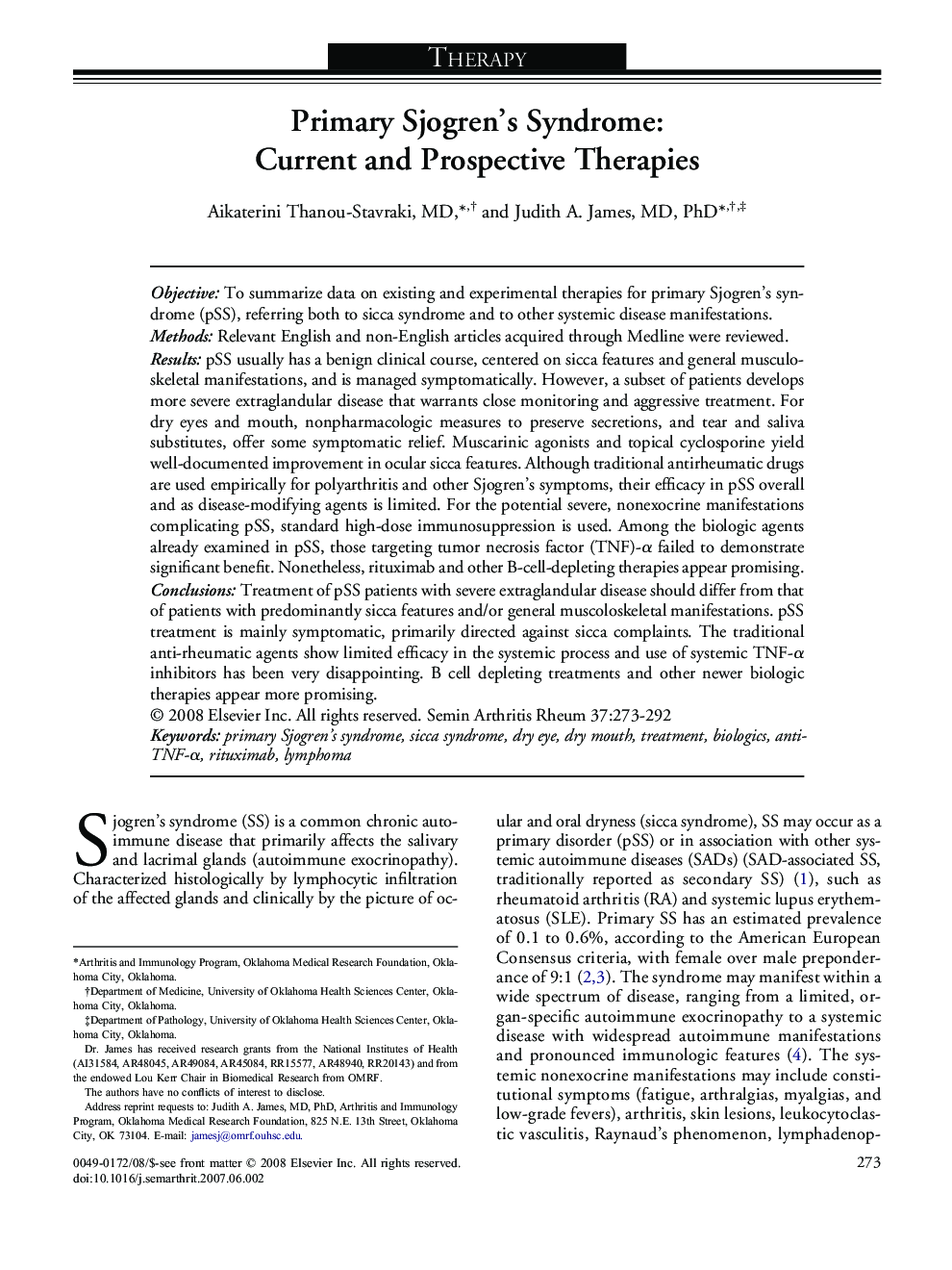| Article ID | Journal | Published Year | Pages | File Type |
|---|---|---|---|---|
| 2771826 | Seminars in Arthritis and Rheumatism | 2008 | 20 Pages |
ObjectiveTo summarize data on existing and experimental therapies for primary Sjogren’s syndrome (pSS), referring both to sicca syndrome and to other systemic disease manifestations.MethodsRelevant English and non-English articles acquired through Medline were reviewed.ResultspSS usually has a benign clinical course, centered on sicca features and general musculoskeletal manifestations, and is managed symptomatically. However, a subset of patients develops more severe extraglandular disease that warrants close monitoring and aggressive treatment. For dry eyes and mouth, nonpharmacologic measures to preserve secretions, and tear and saliva substitutes, offer some symptomatic relief. Muscarinic agonists and topical cyclosporine yield well-documented improvement in ocular sicca features. Although traditional antirheumatic drugs are used empirically for polyarthritis and other Sjogren’s symptoms, their efficacy in pSS overall and as disease-modifying agents is limited. For the potential severe, nonexocrine manifestations complicating pSS, standard high-dose immunosuppression is used. Among the biologic agents already examined in pSS, those targeting tumor necrosis factor (TNF)-α failed to demonstrate significant benefit. Nonetheless, rituximab and other B-cell-depleting therapies appear promising.ConclusionsTreatment of pSS patients with severe extraglandular disease should differ from that of patients with predominantly sicca features and/or general muscoloskeletal manifestations. pSS treatment is mainly symptomatic, primarily directed against sicca complaints. The traditional anti-rheumatic agents show limited efficacy in the systemic process and use of systemic TNF-α inhibitors has been very disappointing. B cell depleting treatments and other newer biologic therapies appear more promising.
